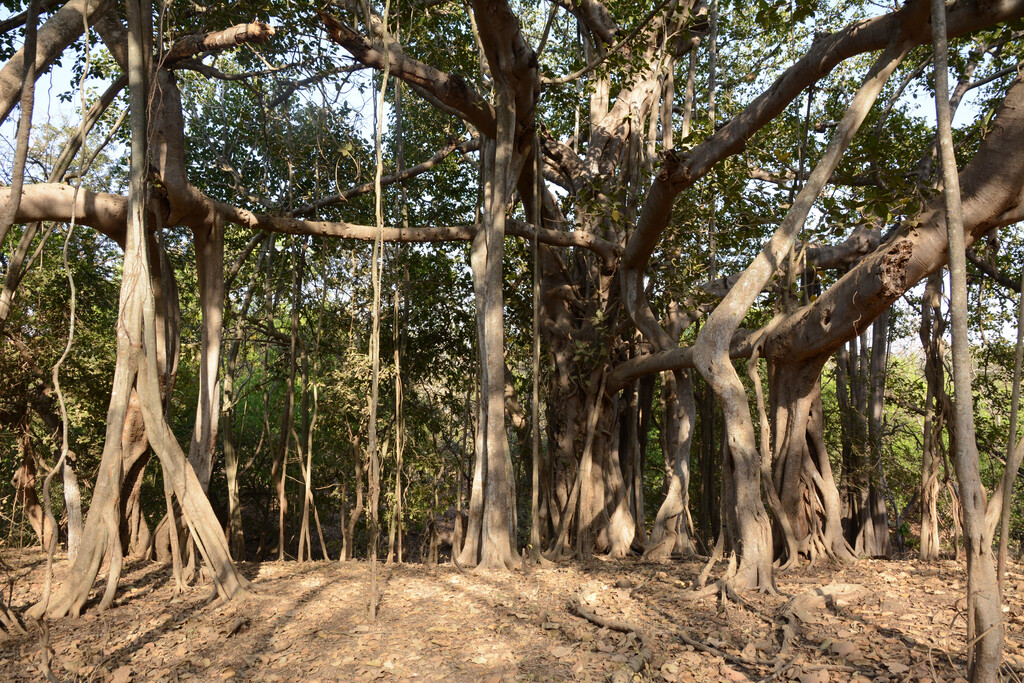Ficus benghalensis
banyan
A tropical evergreen tree, over 20m high in its native range, with widely spreading branches and aerial roots that often hang down to the ground, forming secondary trunks. Leaves are oval-shaped and leathery, flushed bronze when young, and dark green with paler veins when mature. Small, round figs are borne in pairs and ripen to bright red, though these are never pollinated outside the native range. Cuttings and young plants of this species are sometimes grown as houseplants
Other common names
bo treeEast Indian fig tree
see moregrove tree
Indian banyan
Indian fig
pagoda tree
Synonyms
Ficus indica
Buy this plant
Size
Ultimate height
Higher than 12 metresTime to ultimate height
more than 50 yearsUltimate spread
Wider than 8 metresGrowing conditions
Moisture
Moist but well–drainedpH
Acid, Alkaline, NeutralColour & scent
| Stem | Flower | Foliage | Fruit | |
| Spring | Green Bronze | |||
|---|---|---|---|---|
| Summer | Green | |||
| Autumn | Green | Red | ||
| Winter | Green |
Position
- Full sun
Aspect
South–facing or West–facing
Exposure
Sheltered Hardiness
H1ABotanical details
- Family
- Moraceae
- Native to GB / Ireland
- No
- Foliage
- Evergreen
- Habit
- Spreading branched
- Potentially harmful
- Skin allergen. Wear gloves and other protective equipment when handling
- Genus
Ficus can be evergreen or deciduous trees, shrubs or climbers, with often leathery, simple, entire or lobed leaves and tiny flowers borne within a hollow receptacle which enlarges to form the fruit
- Name status
Correct
How to grow
Cultivation
Grow under glass (minimum temperature 15°C), in a peat-free, loam-based compost with added bark chippings, in full or filtered light. Water moderately in growth and keep moist over winter
Propagation
Propagate by seed, soaked for 12 hours and sown at 18-21°C in spring, or by semi-ripe cuttings with bottom heat in spring or summer. Plants bleed latex when cut, dip in charcoal powder to seal
Suggested planting locations and garden types
- Houseplants
Pruning
Pests
May be susceptible to glasshouse red spider mite, thrips, mealybugs and scale insects under glass
Diseases
May be susceptible to honey fungus
Get involved
The Royal Horticultural Society is the UK’s leading gardening charity. We aim to enrich everyone’s life through plants, and make the UK a greener and more beautiful place.